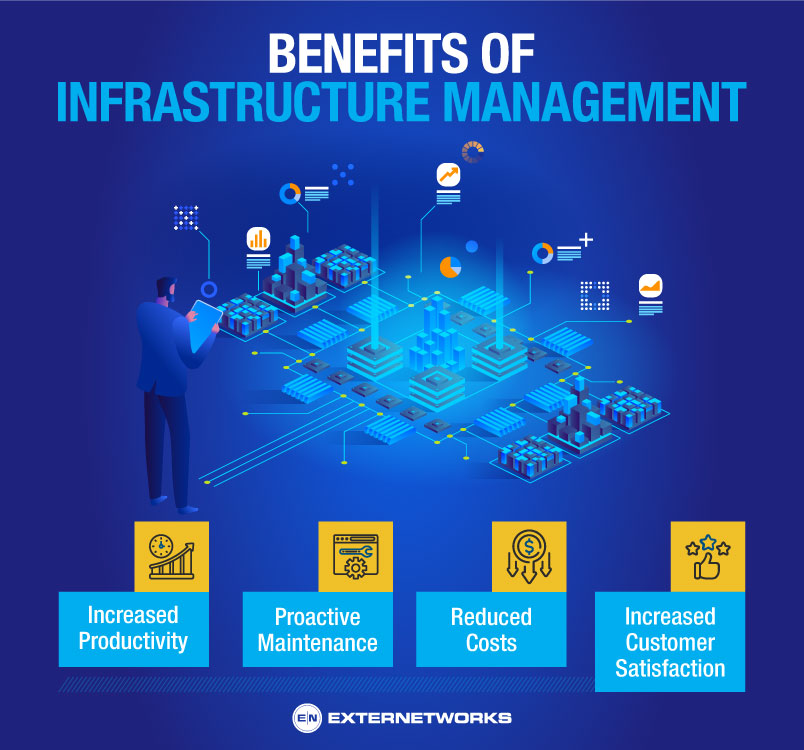Infrastructure Management has become a critical component of modern businesses. Managing and securing data centers, network infrastructures, and cloud services is essential to a successful enterprise.
It is a broad term that encompasses several disciplines within information technology. These include operations, networking, security, and software development, and it also provides for the management of physical assets, including hardware, software, and facilities. This article will see more about what Infrastructure management is and its benefits.
Infrastructure management aims to provide an environment in which all aspects of IT can be managed effectively. This includes ensuring that the right people have access to the right tools, monitoring, and reporting system performance, and providing support for new technologies.
In addition, it helps to identify potential problems before they occur so that you can take action to prevent them from escalating into major issues.
IT infrastructure management is often separated into three parts: systems management, storage management, and network management. Several IT infrastructure components must be managed for critical applications to stay up and run. Cloud computing has made it easier for organizations to outsource certain IT operations to third-party managed service providers (MSPs) at lower costs than they would be performed internally.
There are three main ways that IM works:
As more organizations adopt cloud-based solutions, they must ensure that their IT infrastructure is well designed and optimized for efficient use. To do this, they need to understand how their current infrastructure works, what needs to change, and who will be responsible for making those changes.
This means they need to know about the different components of their IT infrastructure, how they interact with each other, and how they can be improved. This knowledge is vital to avoid costly downtime and improve efficiency.
An effective IT infrastructure management team consists of multiple members who perform various roles. They include:
To succeed in IT infrastructure services, you must have good technical skills. You must be able to install, configure, and manage various types of software, hardware, and networking equipment.
You also need to be familiar with the latest trends in technology, including virtualization, storage, network security, and mobile devices. Finally, you must communicate clearly and concisely, both verbally and in writing.

The benefits of Infrastructure Management include:
In conclusion, it’s important to remember that IT infrastructure isn’t just about managing servers and networks; it’s about managing the entire IT landscape. To do this successfully, you need to understand what makes up your infrastructure and how it works together.
